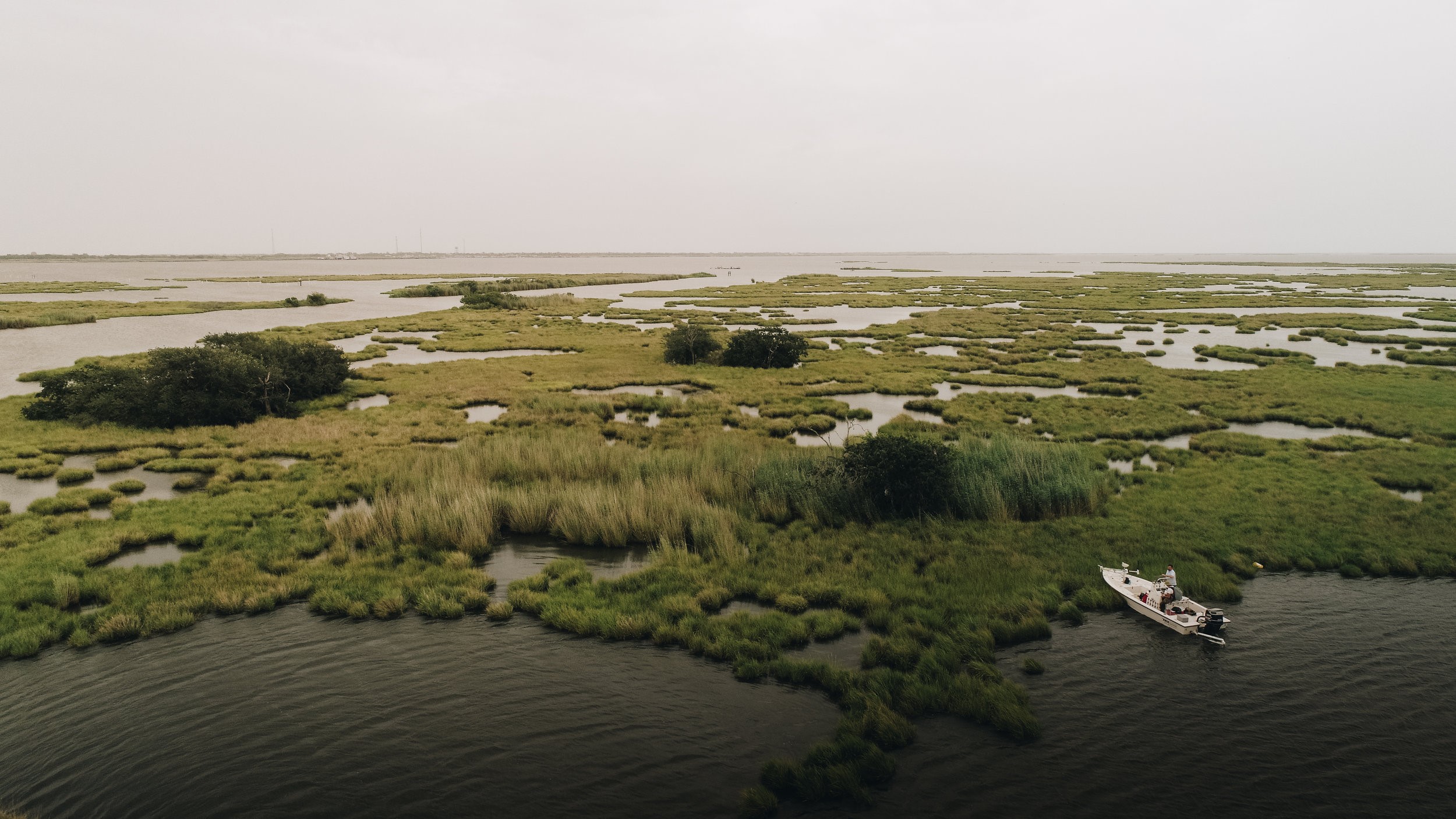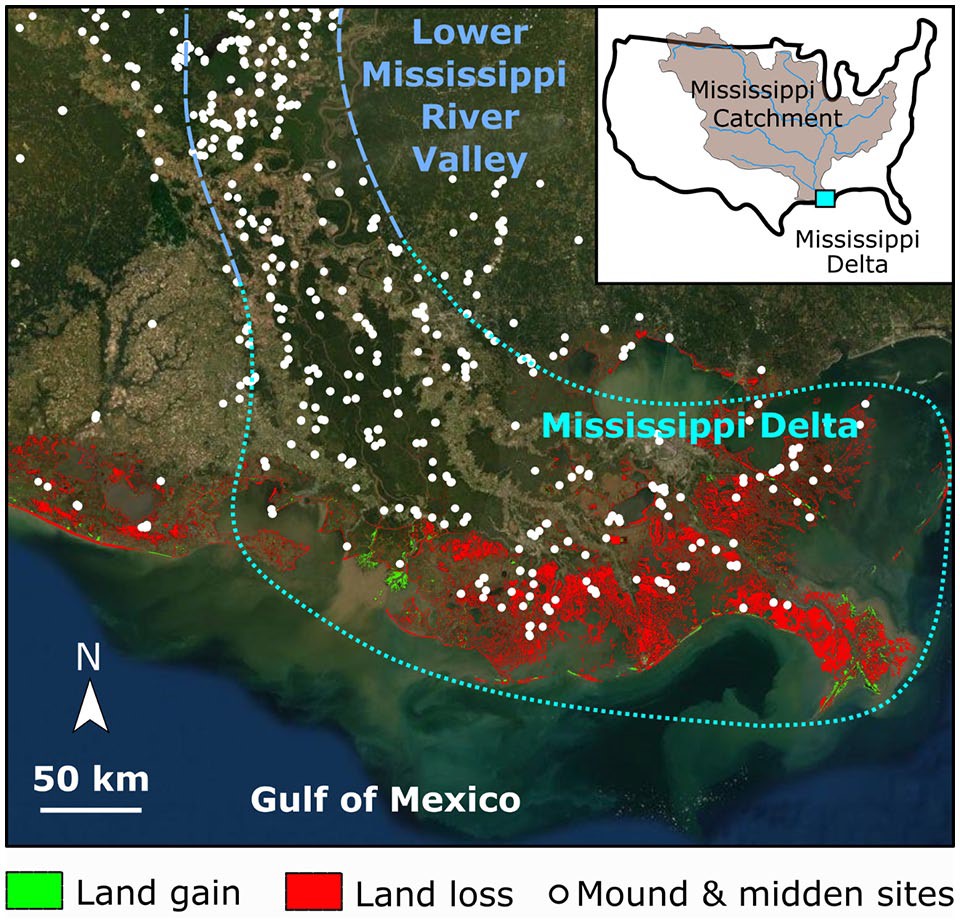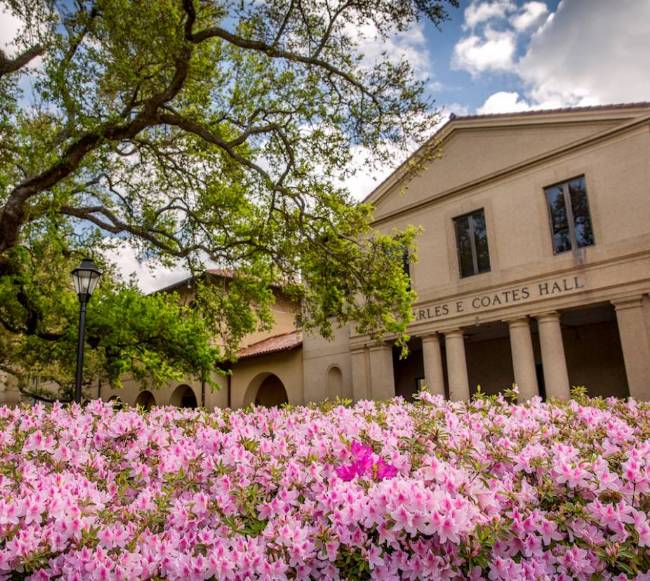Scientists Advocate for Endangered Louisiana Archaeological Sites to be Included in Coastal Restoration Plans
January 04, 2023

Adams Bay is one of many Mississippi Delta archaeological mound sites being washed away due to coastal landloss.
– Photo: Noah CusterAdams Bay Project
BATON ROUGE – In order to preserve and to better understand the lives and cultures of ancient Louisiana peoples, large-scale salvage and investigation of archaeological sites is urgently needed, according to a new study by scientists at LSU.
The study, published in the peer-reviewed journal, “The Holocene,” analyzed the last 100 years of archaeological research in the Mississippi Delta of coastal Louisiana and is coauthored by researchers at Florida State University and Wageningen University in the Netherlands. The work focused on ancient indigenous sites, including earthen and shell mounds that dot the Louisiana coast.
“Louisiana scientific archaeological research started about a century ago,” said Matt Helmer, lead author and affiliate professor of anthropology at LSU. “This means we now have a pretty long record to assess both past trends and future challenges regarding research, site preservation and management. We can see what works and what is needed–namely better integration of archaeology within coastal restoration planning.”

A map with known archaeological mound and midden sites in relation to delta land gain and land loss.
– Image: Matt Helmer, Jayur Mehta and Liz Chamberlain
Managing these sites is critical considering the rapid coastal landloss that Louisiana faces.
“In the early-mid 1900’s, we saw large-scale state and federal efforts to excavate and document Louisiana archaeology through the Works Progress Administration,” Helmer said. “This scale of effort is needed today before endangered sites are lost to the sea.”
“Today we can do even better,” Helmer added. “We have new tools and technology to study the sites and a new concepual framework to understand them as part of the living landscape. This means archaeological sites can be managed in a way that includes their cultural, ecological, and physical importance, and to consider them the same way that we do endangered natural and biological resources.”
Jayur Mehta, assistant professor at Florida State, a co-author and expert on Louisiana’s ancient mound-builders, highlights the sheer scope of site destruction and ramifications of their disappearance.
“These mound sites that are completely washing away in the span of a few decades are the first monuments that humans ever built in this landscape, and have so much left to reveal about Louisiana’s first peoples,” he said.
Coauthor Liz Chamberlain, an assistant professor at Wageningen University and an alumna of Tulane University and LSU, further highlighted the value of the sites.
“It is amazing that in Louisiana, we have a multi-millennia record of people living with and adapting to coastal change, captured in the mound sites. This is an important part of Louisiana heritage, and one that should be studied and preserved.”
Liz Chamberlain, LSU alumna and assistant professor at Wageningen University, the Netherlands


